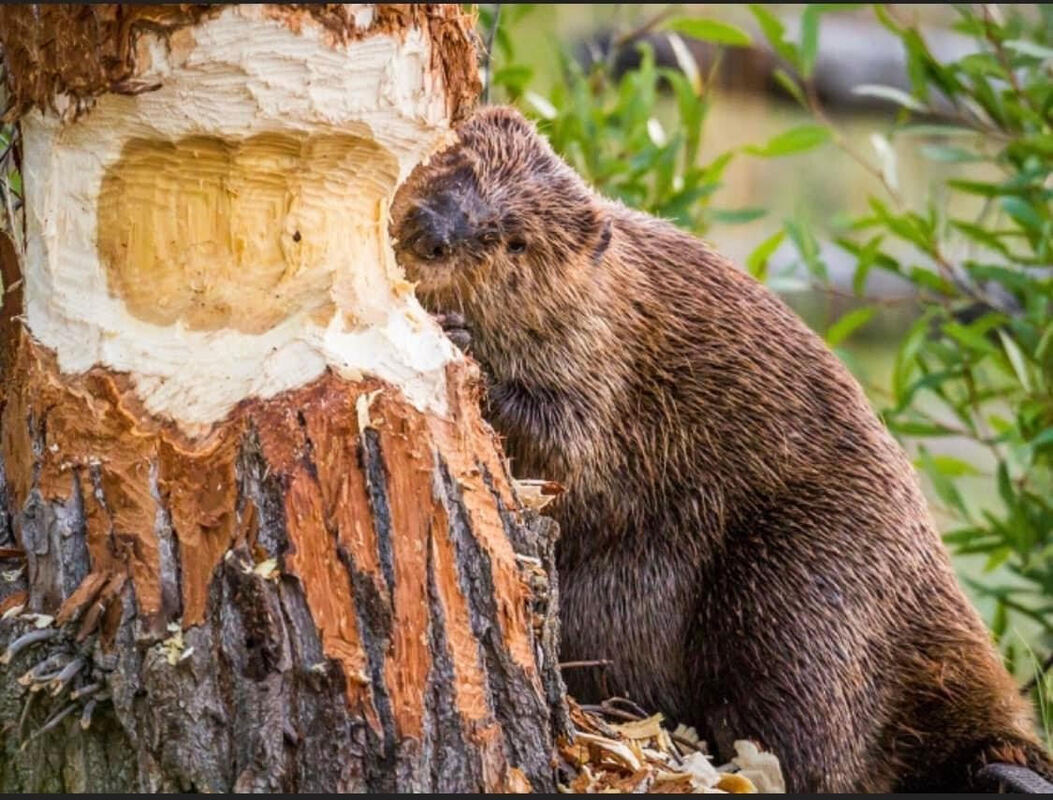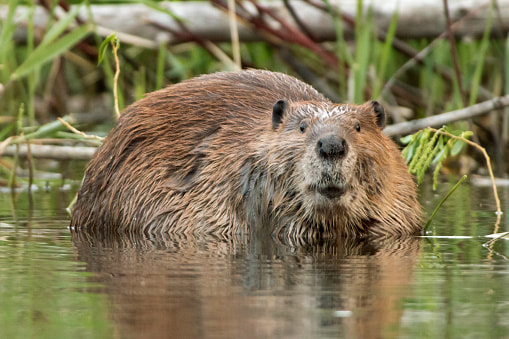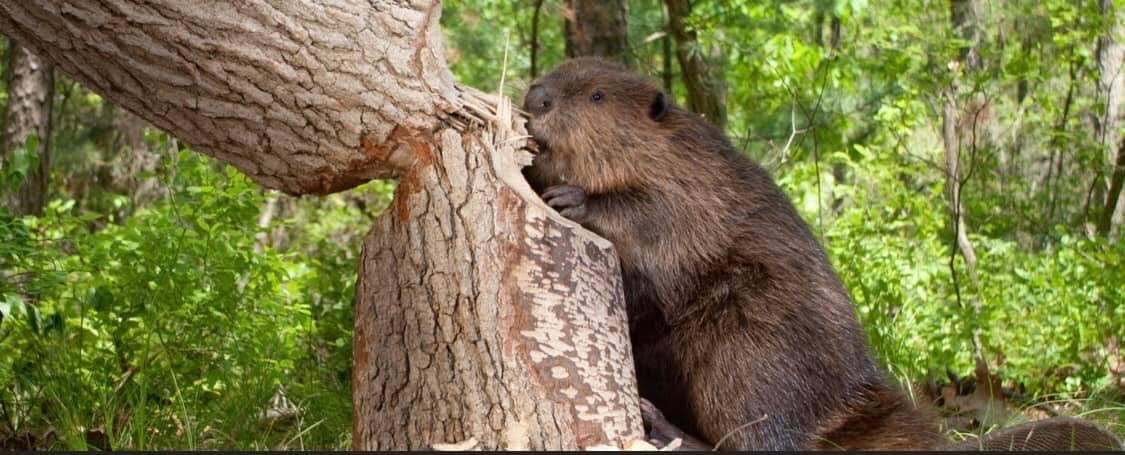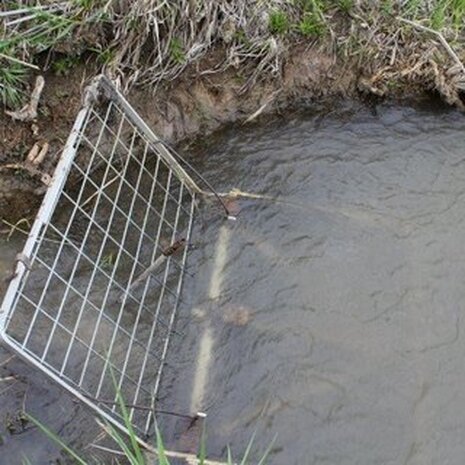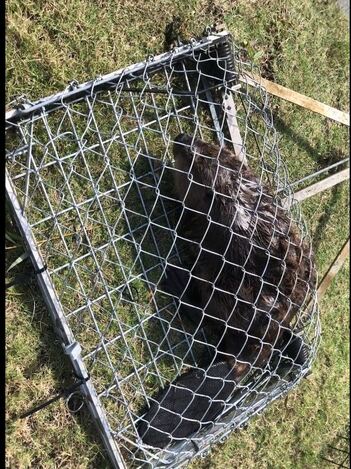Nature's Engineers
Few animals are as industrious or as impactful on their environment as beavers
In Oklahoma, beavers are usually found in farm ponds where they can do a great deal of damage to the surrounding trees, or to the pond dam by digging burrows into it. Sometimes outlet streams or drainage pipes are dammed creating a significant flood risk.
Beaver populations in a pond can range from one beaver to a family colony. A single family colony is typically made up of two adults, two to four of this year's kits, and two to four of last year's kits. Each spring when the female prepares to have another litter, the adults drive the two year olds out of the parent's territory. These young beavers set off over land to find a new pond to establish a new colony in. If they find your pond, you will soon have an entire family colony! This is why a pond or lake that hasn't had beavers all winter suddenly has a beaver problem.
Predator Impact can remove the beavers living in your pond. How long it will stay beaver free depends on how close the nearest population of beavers are. It is common for several adjoining landowners to bring us in at the same time thereby increasing the buffer zone for all of them.
Unfortunately, beavers are one of the few exceptions to our "no kill" policy. While it is possible to live trap them, there simply isn't anywhere in Oklahoma to release them. the beavers are humanely euthanized and their fur, glands, and meat are fully utilized.
How can I protect my trees from beaver damage?
Follow this link to a very helpful article from "The Beaver Institute" on protecting trees from beavers.
www.beaverinstitute.org/problems-solutions/tree-damage/
Pay special attention to the part of the article on sand and latex paint. This has worked well for many customers. They will still chew down some of your trees, this technique just lets you protect the most important ones and directs them to the less desirable ones.
Urban Beavers
Beaver colonies double in number every 2-3 years. With little demand for beaver fur, there is little to no pressure from the fur industry. Combined with few natural predators, and shrinking wild habitat, it isn't surprising that beavers are moving into neighborhood ponds, golf courses, and anywhere that there is water to swim in, and trees to eat.
Lethal traps normally used in a rural setting are simply too dangerous to use around children and pets. Predator Impact has developed live trapping techniques that are safe and effective, with minimal risk to non-target animals and people.
If you have beaver problems in any setting, contact Predator Impact, LLC for a free, no obligation consultation. We lover to talk about beavers!
Beaver populations in a pond can range from one beaver to a family colony. A single family colony is typically made up of two adults, two to four of this year's kits, and two to four of last year's kits. Each spring when the female prepares to have another litter, the adults drive the two year olds out of the parent's territory. These young beavers set off over land to find a new pond to establish a new colony in. If they find your pond, you will soon have an entire family colony! This is why a pond or lake that hasn't had beavers all winter suddenly has a beaver problem.
Predator Impact can remove the beavers living in your pond. How long it will stay beaver free depends on how close the nearest population of beavers are. It is common for several adjoining landowners to bring us in at the same time thereby increasing the buffer zone for all of them.
Unfortunately, beavers are one of the few exceptions to our "no kill" policy. While it is possible to live trap them, there simply isn't anywhere in Oklahoma to release them. the beavers are humanely euthanized and their fur, glands, and meat are fully utilized.
How can I protect my trees from beaver damage?
Follow this link to a very helpful article from "The Beaver Institute" on protecting trees from beavers.
www.beaverinstitute.org/problems-solutions/tree-damage/
Pay special attention to the part of the article on sand and latex paint. This has worked well for many customers. They will still chew down some of your trees, this technique just lets you protect the most important ones and directs them to the less desirable ones.
Urban Beavers
Beaver colonies double in number every 2-3 years. With little demand for beaver fur, there is little to no pressure from the fur industry. Combined with few natural predators, and shrinking wild habitat, it isn't surprising that beavers are moving into neighborhood ponds, golf courses, and anywhere that there is water to swim in, and trees to eat.
Lethal traps normally used in a rural setting are simply too dangerous to use around children and pets. Predator Impact has developed live trapping techniques that are safe and effective, with minimal risk to non-target animals and people.
If you have beaver problems in any setting, contact Predator Impact, LLC for a free, no obligation consultation. We lover to talk about beavers!
